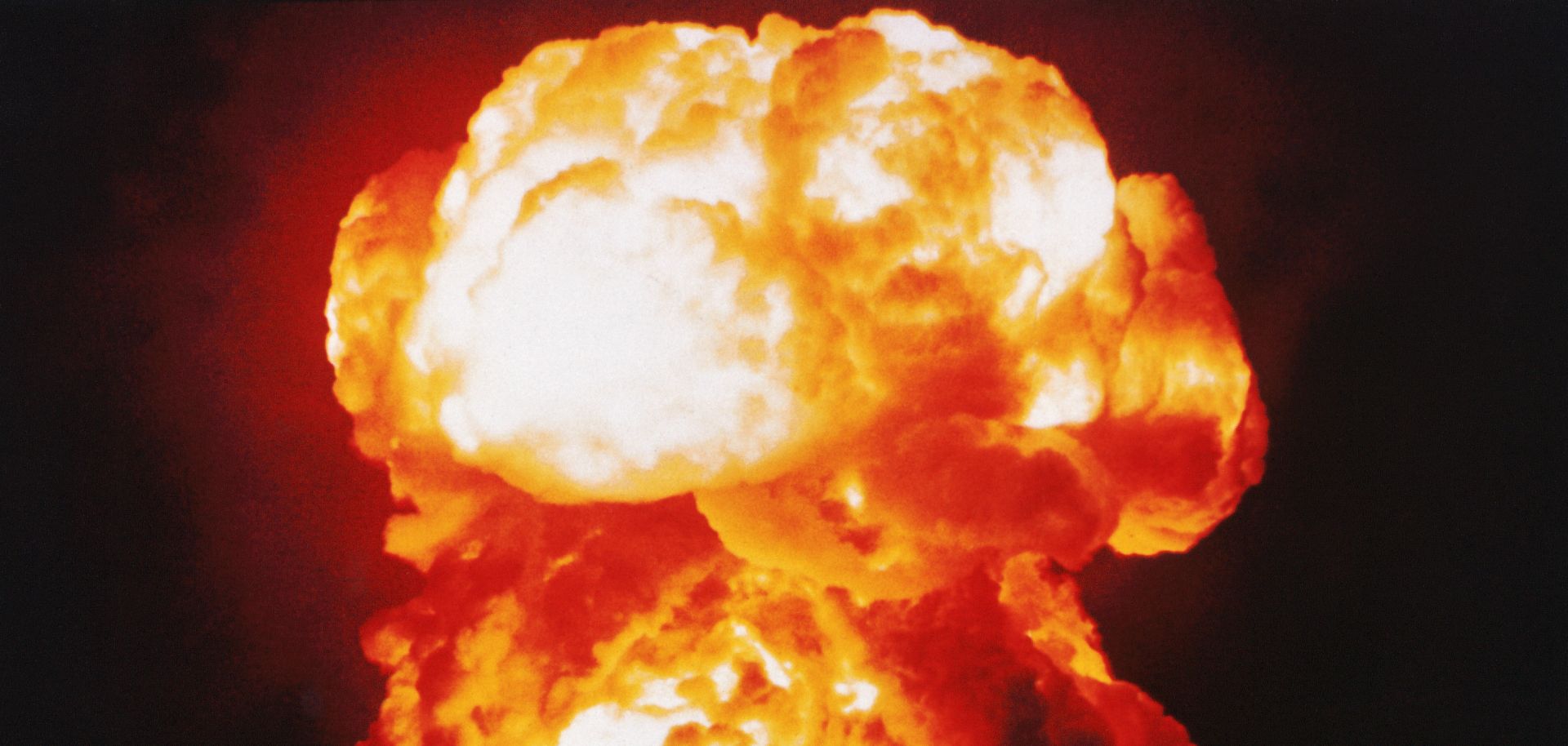ASSESSMENTS
The Sun Sets on an Arms Control Treaty
Aug 2, 2019 | 09:30 GMT

The United States detonates an atomic bomb nicknamed "Smokey" as part of Operation PLUMBBOB in the Nevada desert in 1957. As the U.S. leaves the INF Treaty, missile proliferation will only increase.
(CORBIS/Corbis via Getty Images)
Subscribe Now
SubscribeAlready have an account?
